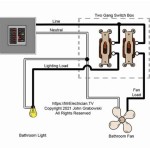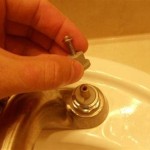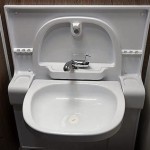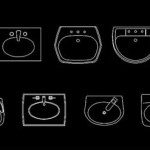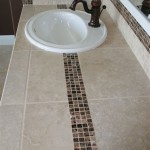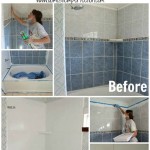How to Get Rid of a Mildew Smell in the Bathroom
A musty, mildew smell in the bathroom can be unpleasant and make the space feel unwelcoming. It's a common problem, usually caused by excess moisture and lack of proper ventilation. Thankfully, there are effective steps you can take to eliminate the smell and prevent it from returning.
Identify the Source
To effectively tackle the mildew smell, it's crucial to identify the source. A thorough inspection will pinpoint the areas where mildew has taken hold, allowing you to address the problem directly. Begin by carefully examining the bathroom, paying attention to these areas:
- Shower and Tub: Check for mildew growth in the grout lines, along the caulk, and around the drain. Moisture from showers and baths often leads to its development in these areas.
- Walls and Ceilings: Inspect for dark spots or discoloration on the walls and ceiling, particularly around windows and ventilation openings. Mildew often thrives in these areas due to poor ventilation and condensation.
- Behind Toilet and Sink: These areas can harbor mildew if moisture is present. Inspect the base of the toilet, behind the sink, and under the vanity for any signs of growth.
- Laundry Basket and Towels: Damp laundry left in a basket or towels that haven't dried completely can contribute to mildew growth and create unpleasant odors. Make sure to promptly dry laundry and hang towels after use.
- Ventilation System: Ensure proper ventilation. A clogged or dysfunctional exhaust fan is often a primary cause of mildew growth. If the fan doesn't work, consider professional repair or replacement.
Clean and Disinfect
Once you've identified the mildew sources, it's time to give your bathroom a thorough clean and disinfect. Effective cleaning removes mildew and its odor, while disinfecting kills the spores and prevents future growth. Here's how to tackle different areas:
- Shower and Tub: Use a mildew-specific cleaner or a solution of bleach and water (1 part bleach to 10 parts water). Apply it to the affected areas, letting it sit for a few minutes before scrubbing with a brush. Rinse thoroughly with water.
- Walls and Ceilings: For mildew on painted walls, a bleach-based cleaner or a diluted solution of baking soda and water can be effective. Test the cleaner on a small, inconspicuous area first to ensure colorfastness. Use a sponge or soft-bristled brush to apply the cleaner and rinse well.
- Toilet and Sink: Clean the areas behind the toilet and sink with a mildew cleaner or a bleach solution. Be sure to remove any buildup of dirt and debris.
Prevent Future Mildew Growth
Once you've effectively cleaned and disinfected the bathroom, it's crucial to implement measures to prevent future mildew growth. These practices include:
- Enhance Ventilation: Ensure adequate ventilation in the bathroom. Run the exhaust fan during and after showers and baths to remove steam and moisture. If the fan is weak or inefficient, consider replacing it with a more powerful model.
By following these steps, you can effectively eliminate the mildew smell from your bathroom and create a cleaner, healthier environment. Remember to be cautious when using bleach-based cleaners and always wear gloves and proper ventilation. If the mildew problem persists, consult a professional for further assistance.

What To Do When The Bathroom Sink Smells Like Mildew Mold Smell

5 Ways To Get Rid Of That Mildew Odor In Your Bathroom For Good

How To Get Rid Of Mildew Smell In Your House 9 Easy Ways

How To Get Rid Of Mildew Smell Homeowner S Guide Bob Vila

Moldy Smelling Water From Bathroom Faucet Hometalk

7 Indispensable Bathroom Smell Remover S In Housekeeping

How To Get Rid Of The Musty Smell Kiwi Services

7 Indispensable Bathroom Smell Remover S In Housekeeping

How To Clean Towels Remove Mildew Smell And Bacteria

Bathroom Ceiling Mold Removal When To Clean Call Branch Environmental
Related Posts

